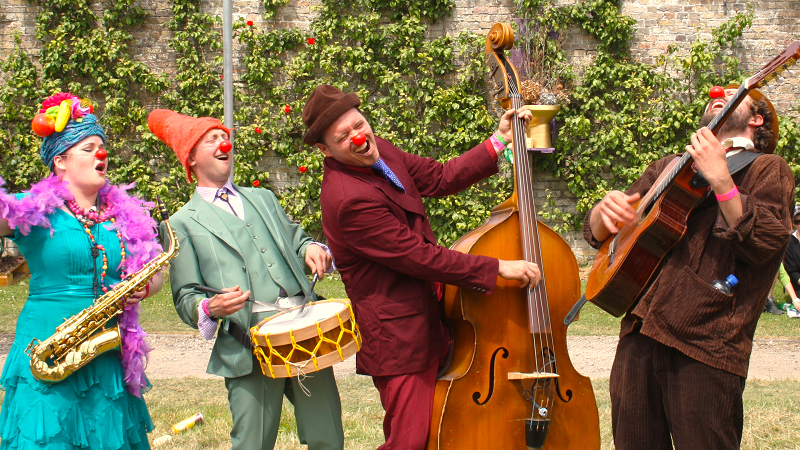 The Irish National Clown Orchestra of Ireland, Jaimie Carswell's production supported by the Bursary and Agility Awards. Photo features Lisa Cannon, Tony Travers, Jaimie Carswell and Donal Gunne. (Photo: Peter Martin)
The Irish National Clown Orchestra of Ireland, Jaimie Carswell's production supported by the Bursary and Agility Awards. Photo features Lisa Cannon, Tony Travers, Jaimie Carswell and Donal Gunne. (Photo: Peter Martin)
The strategic context for the Arts Council’s support of circus and all other artforms and areas of arts practice is set out in Making Great Art Work: Arts Council Strategy (2016 –2025) (PDF, 3.29 MB). It describes how we will lead the development of the arts in Ireland over the next decade. Our strategy has five priority areas: the artist; public engagement; investment strategy; spatial and demographic planning; and developing capacity. Current
Circus, Street Arts and Spectacle Policy is aligned to the key objectives and desired outcomes of Making Great Art Work and can be viewed here: Circus, Street Arts and Spectacle Policy and Strategy 2018 (PDF,
0.514 MB).
Difference between classical and contemporary circus
Circus practice may be regarded as falling into two distinct strands: traditional/classical circus and contemporary circus. Classical circus has a long working history in Ireland, while contemporary circus practice is relatively new.
The distinction between the two strands is reflected in the differences between the styles of presentation, artistic direction, modes of distribution, and histories of development within the country. As an artform circus attracts high audience numbers
each year including many rural audiences and members of new communities. Youth circus activity is a growth area within Ireland.
The Arts Council supports both strands of circus and, through direct support and strategic intervention, engages with the sector to assist individuals and organisations in develop high-quality performance and participatory work. While mindful of the need
to preserve the integrity of both strands of circus, we also encourage practitioners to challenge the boundaries of work practices by exploring and developing opportunities across a range of arts disciplines.